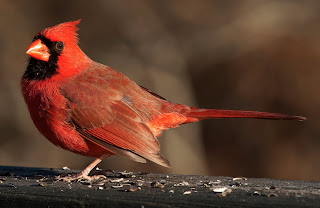 In some earlier posts, I have talked about light and its' power when it comes to making a photograph special. It clearly can set a mood and bring about a response from the viewer, but it can do some subtle things as well.
In some earlier posts, I have talked about light and its' power when it comes to making a photograph special. It clearly can set a mood and bring about a response from the viewer, but it can do some subtle things as well. Getting really sharp photos is the result of a number of things, not the least of which is starting out with a good lense. Without high quality lenses, it is really impossible to achieve the kind of results that pros demand in their work. So, that said, let's assume we all have good glass. Other factors, of course come into play in gettng a sharp photo. Camera movement is certainly the biggest issue for most photographers. A good tripod and making sure that a sufficently high shutter speed has been selected can go a long way to resolving this problem. In todays' digital world, ISO settings can also play a factor in sharpness. Using extremely high ISO's can create noisy images that degrade the overall sharpness. The lower you set your ISO, the cleaner your images will be and the sharper they will appear, if only because they lack noise distortion.
Something that is often overlooked in our quest for clarity and sharpness is the lighting source for our photos. While direct lighting does little for our images, cross lighting, light coming to our subject from a low side angle, can accually help with sharpness. While it does nothing to effect camera movement or accurate focus, it does increase contrast in our photos and make our shots appear even sharper. This is particularly true when our subject is full of texture. ( the feathers of bird, the bark of a tree, a pile of leaves, etc.)
Perhaps the next time you look to shoot something special you'll think about the light and just how it might help you achieve your goal. Thinking about our shots in advance is the best way to improve the end result. The big difference between the pros and the weekend shooters is that the pros give projects some thought.........the others just shoot away. Taking the time to think through a shot can really make a difference in how you shoot and how people see your photography.
No comments:
Post a Comment